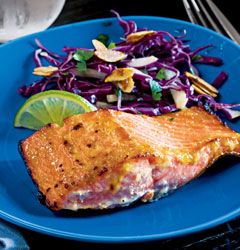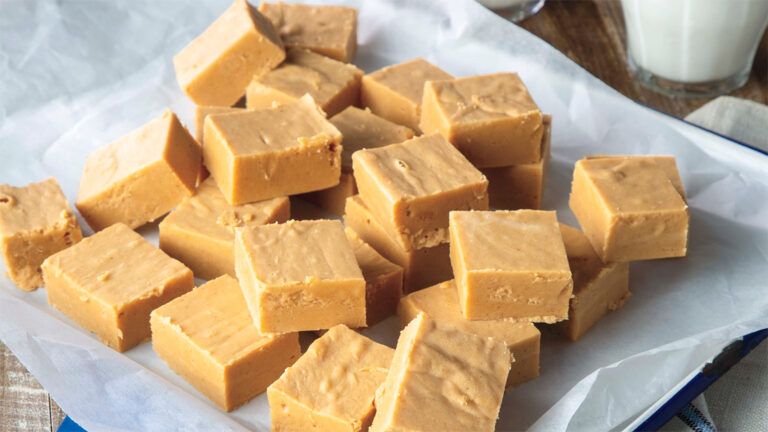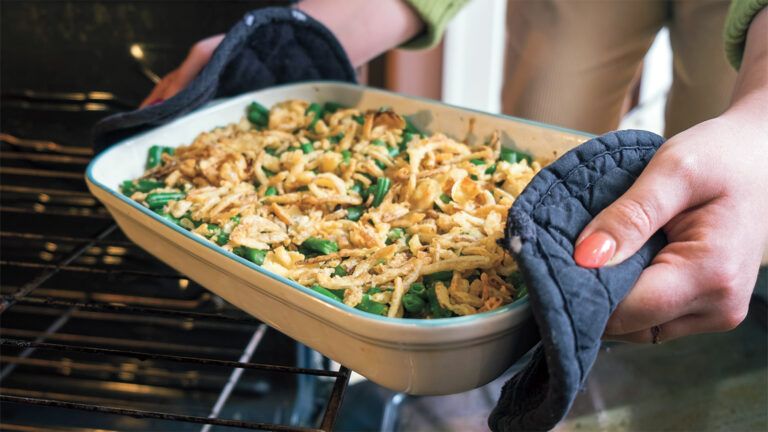When trying Rebecca’s Miso Salmon with Lime-Ginger Glaze and Jicama Salad, follow these five tips!
1. Tamari, a wheat-free sauce made with soybeans, is perfect to use if you’re gluten-intolerant. Soy sauce can be subsituted for tamari, but choose the low-sodium version. Tamari can be found in natural food stores and in supermarkets where Asian foods are sold.
2. The nutrient-packed jicama (pronounced HEE-ka-mah) has a thin brown skin (peel before using). This red cabbage, a “stud” cruciferous, gets major points for being the cancer-fighting superstar of the veggie kingdom. Grown in and around Mexico, its sweet and crunchy flavor is perfect for salads or dunking into your favorite dip.
3. To de-bone your salmon, run your fingertips along the flesh side of the fish until you feel the pin bones. Using either clean needlenose pliers or tweezers, grip the end of each bone and pull it straight out and away from the flesh to remove it.
4. Mirin, a Japanese sweet rice wine, adds sweetness and gentle flavor to sauces and dressings. We partner it with tamari, ginger, garlic and sesame oils. Mirin is available without additives in most natural food stores and in supermarkets where Asian foods are sold.
5. Miso, also called bean paste, is a Japanese culinary mainstay that has the consistency of peanut butter. Miso is used in sauces, soups, marinades and salad dressings. The lighter the color of the miso, the mellower it is: white (made with rice) is smooth, red is richer and dark brown is full-bodied and salty. Miso is extremely nutritious. Store tightly covered in the fridge. Miso can be found in natural foods stores and in supermarkets where Asian foods are sold.





